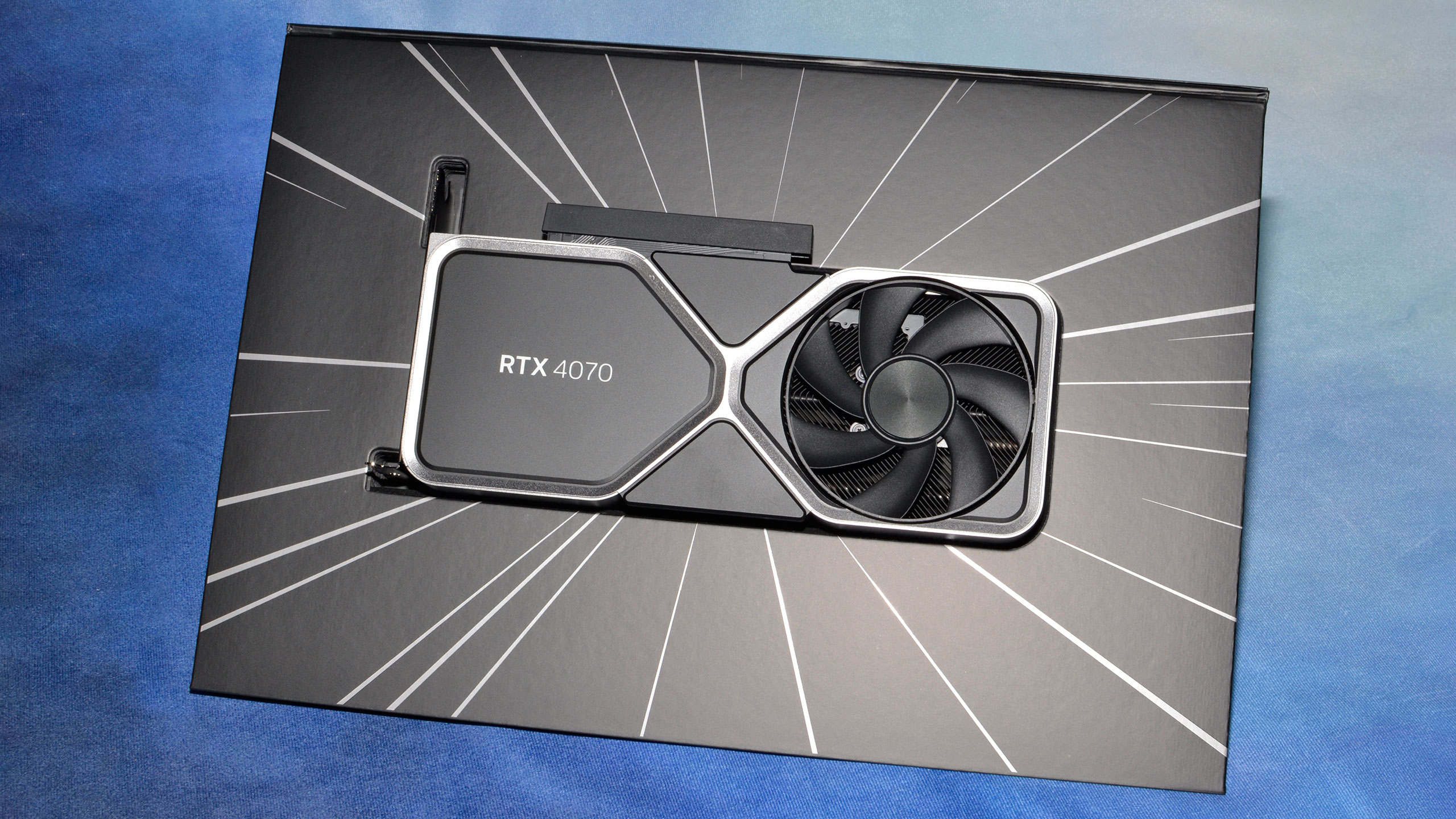Why you can trust Tom's Hardware
Nvidia RTX 4070 Founders Edition Design
We're still more than a little bit curious about the lack of an RTX 4070 Ti Founders Edition. We confirmed with Nvidia that there will not be a 4070 Ti FE, leaving a small hole in the RTX 40-series lineup for those that like reference cards. Perhaps it was a Nvidia's way of throwing a bone to its add-in board partners, or maybe it's just part of that whole RTX 4080 12GB rebranding nonsense from last year. Regardless, we have the RTX 4070 Founders Edition, which looks like the 30-series parts, only with a few differences.
If you check out the RTX 3070 Founders Edition photos, you'll notice that — unlike the RTX 3080 or RTX 4080 — there's no large "RTX 3070" logo on the card. The RTX 3070 Ti meanwhile looks like the other high-end offerings. Basically, Nvidia created a different design and aesthetic on the RTX 3070 and RTX 3060 Ti Founders Edition cards. Those two are also more compact designs, but we did appreciate the look of the higher tier reference models.
Nvidia has "fixed" this with the RTX 4070 Founders Edition, in that there are now two fans on different sides of the card, with a large blank area sporting the RTX 4070 logo. It's not just the RTX 3070 Ti / 3080 design repurposed, however, as the 4070 Founders Edition includes the larger fan used in the 40-series models and also comes with a smaller form factor than the 3080. It's actually just a touch larger (maybe 1mm) than the RTX 3070 FE, but it's also about 2mm thicker.
Also "fixed" is that the RTX 4070 Founders Edition comes with the same large clam box that you'll get with the 4080 and 4090 Founders Editions. Is that a good thing? Maybe, maybe not — less expensive packaging in exchange for an RGB-lit logo would have been better, we think.
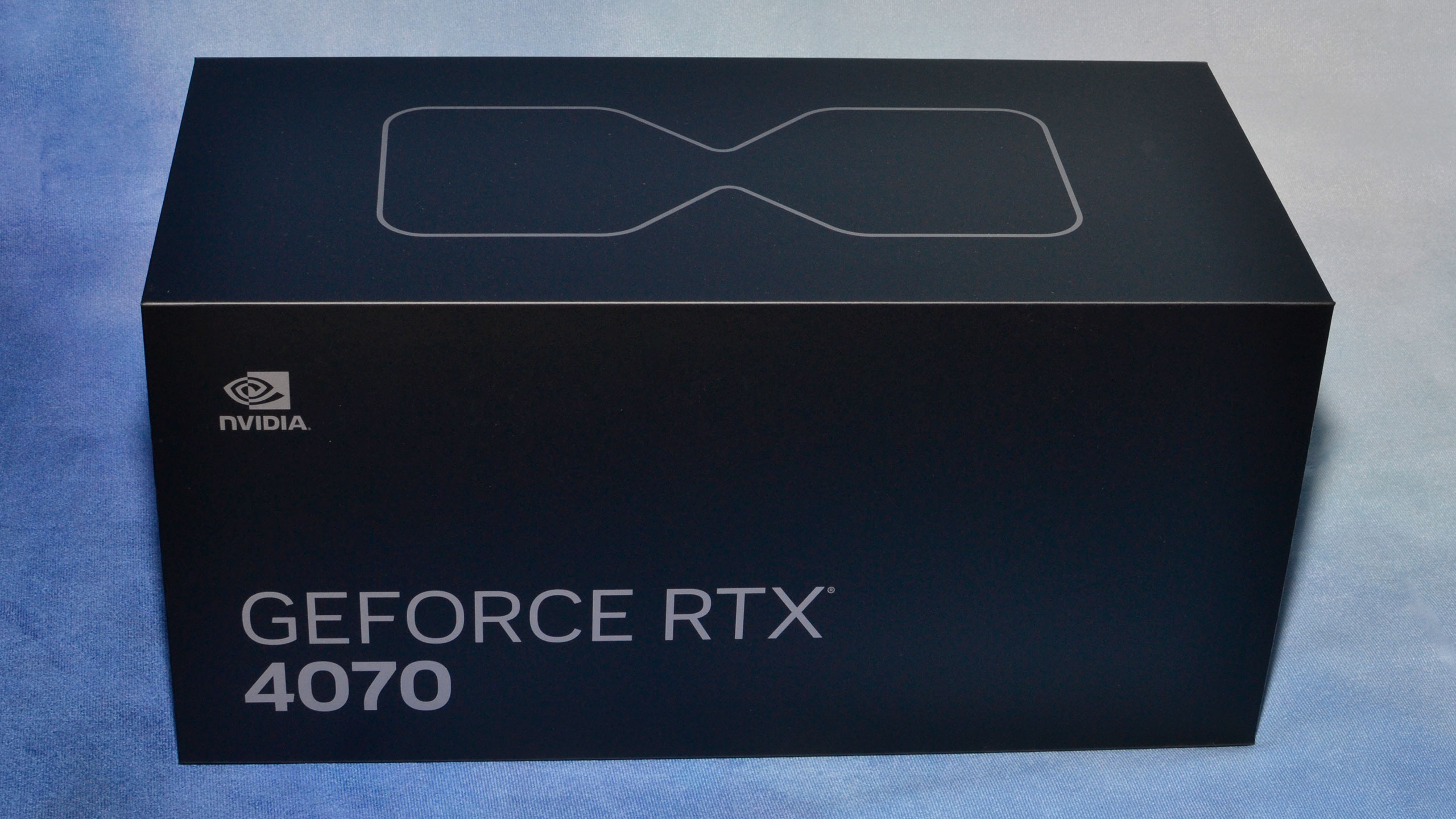
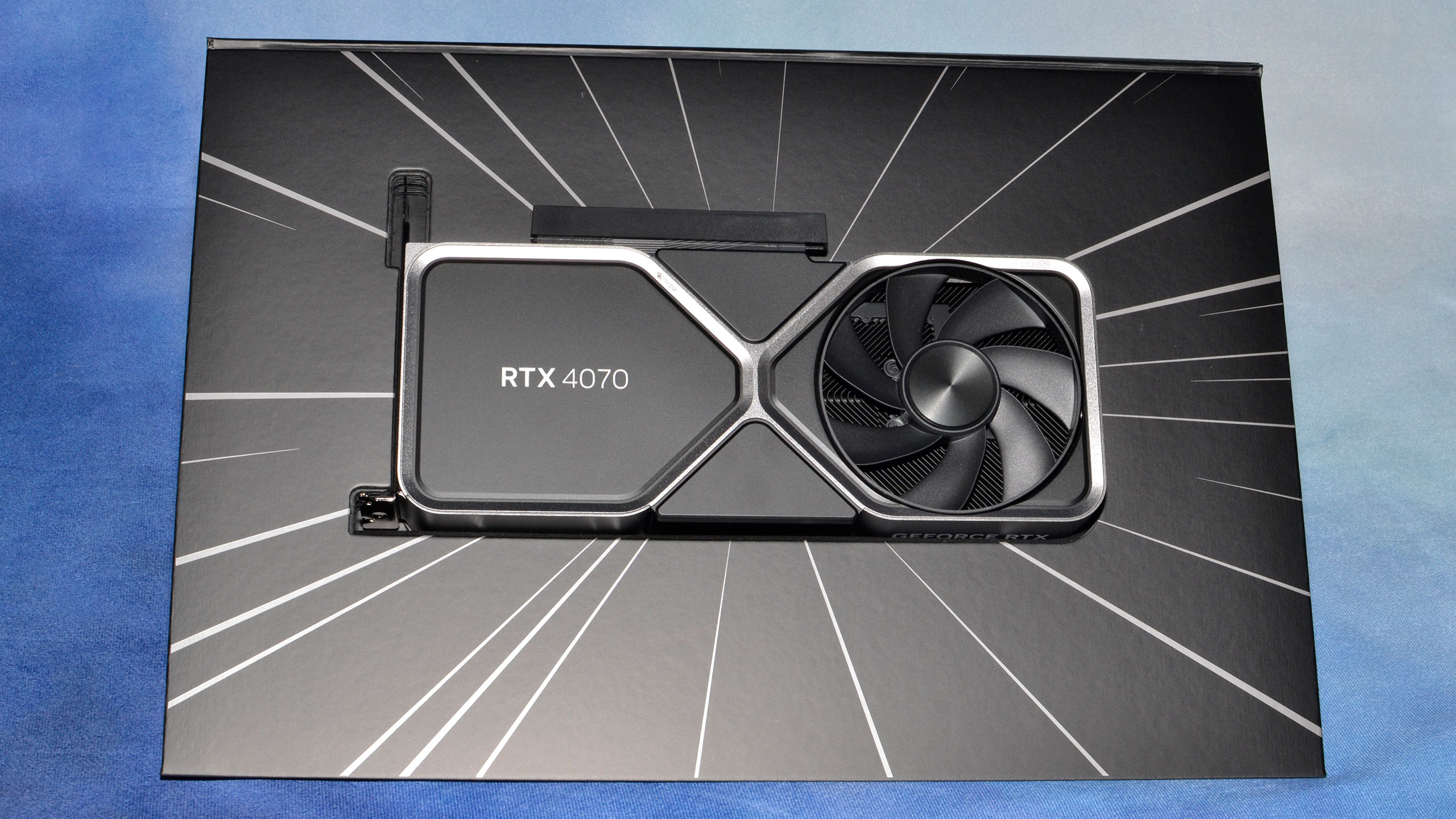
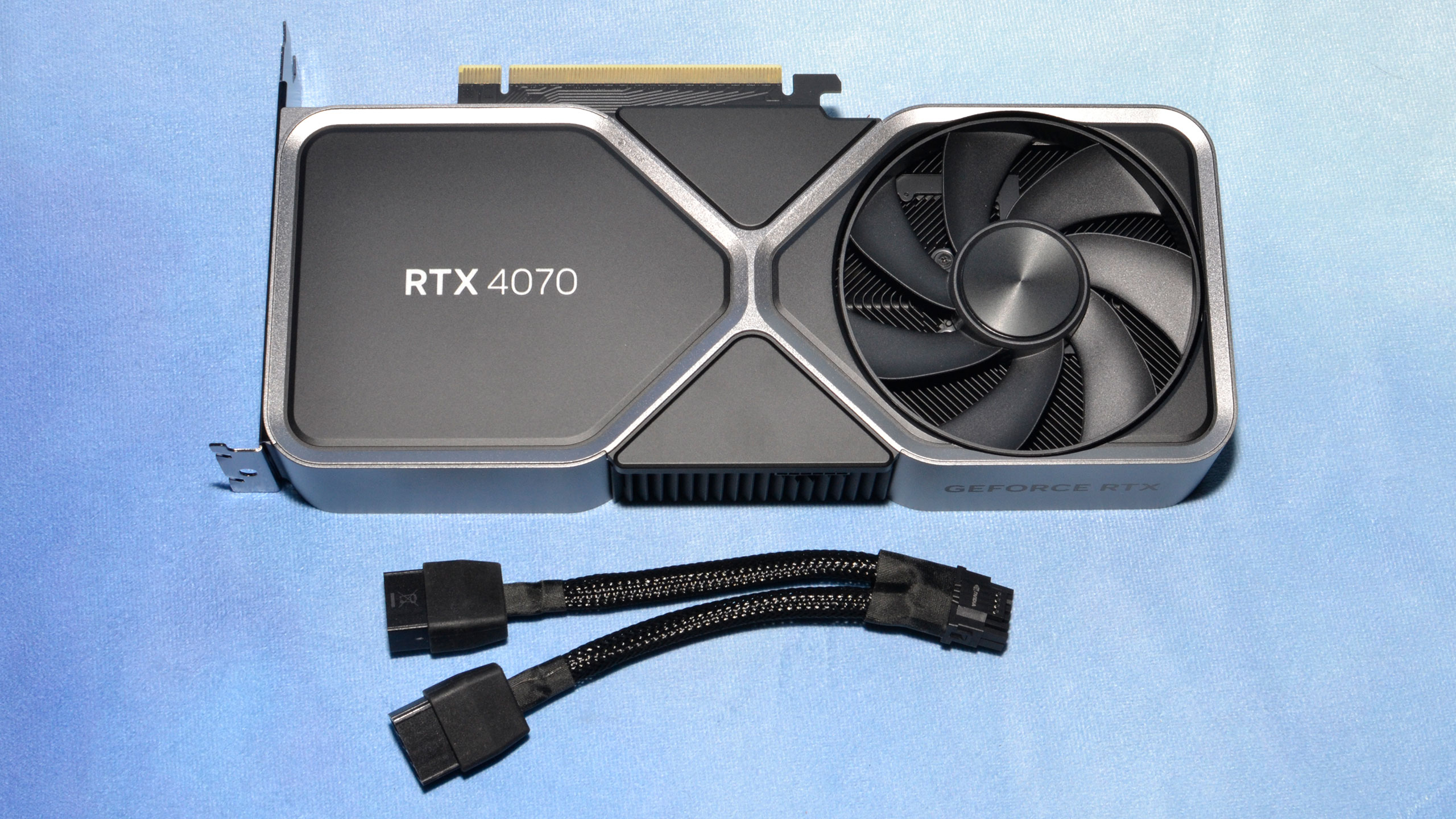
The full dimensions of the RTX 4070 Founders Edition are 244x111x40 mm (compared to 243x111x38 mm on the RTX 3070 FE). It has two custom fans that are 91mm in diameter (versus 85mm on the 3070), and it weighs 1021g (compared to 1030g for the 3070). While we generally prefer the new aesthetic over the 3070 design, there are a few blemishes that are sticking around.
Like that completely pointless 16-pin power connector. Seriously, this is a 200W card, and while it might have required dual 8-pin (or 8-pin plus 6-pin) connectors to ensure there's ample room for overclocking, we'd rather have that than the rather clumsy 16-pin to dual 8-pin adapter. Even if it doesn't melt, it's just one more piece of cabling you'll have to deal with in your build. The PNY RTX 4070 incidentally opts for a single 8-pin connector, though it's also limited in overclocking options, so if you don't want the 16-pin adapter (and/or you don't have a new ATX 3.0 power supply), you might want to give that a look.
Most PCs aren't using much in the way of expansion cards beyond the GPU these days, so a relatively compact dual-slot design will work well in mini-ITX cases all the way up to full-size ATX builds.
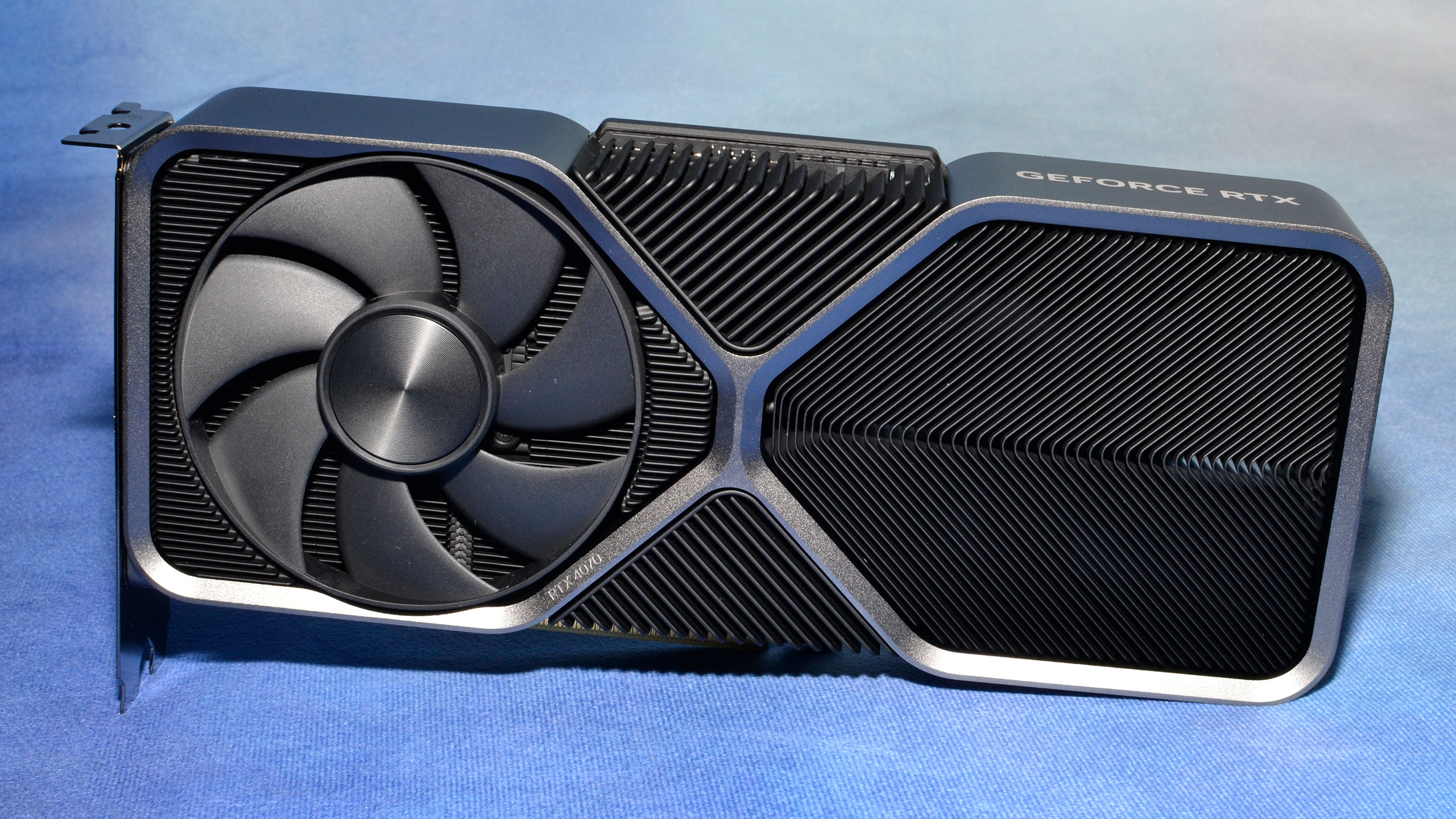
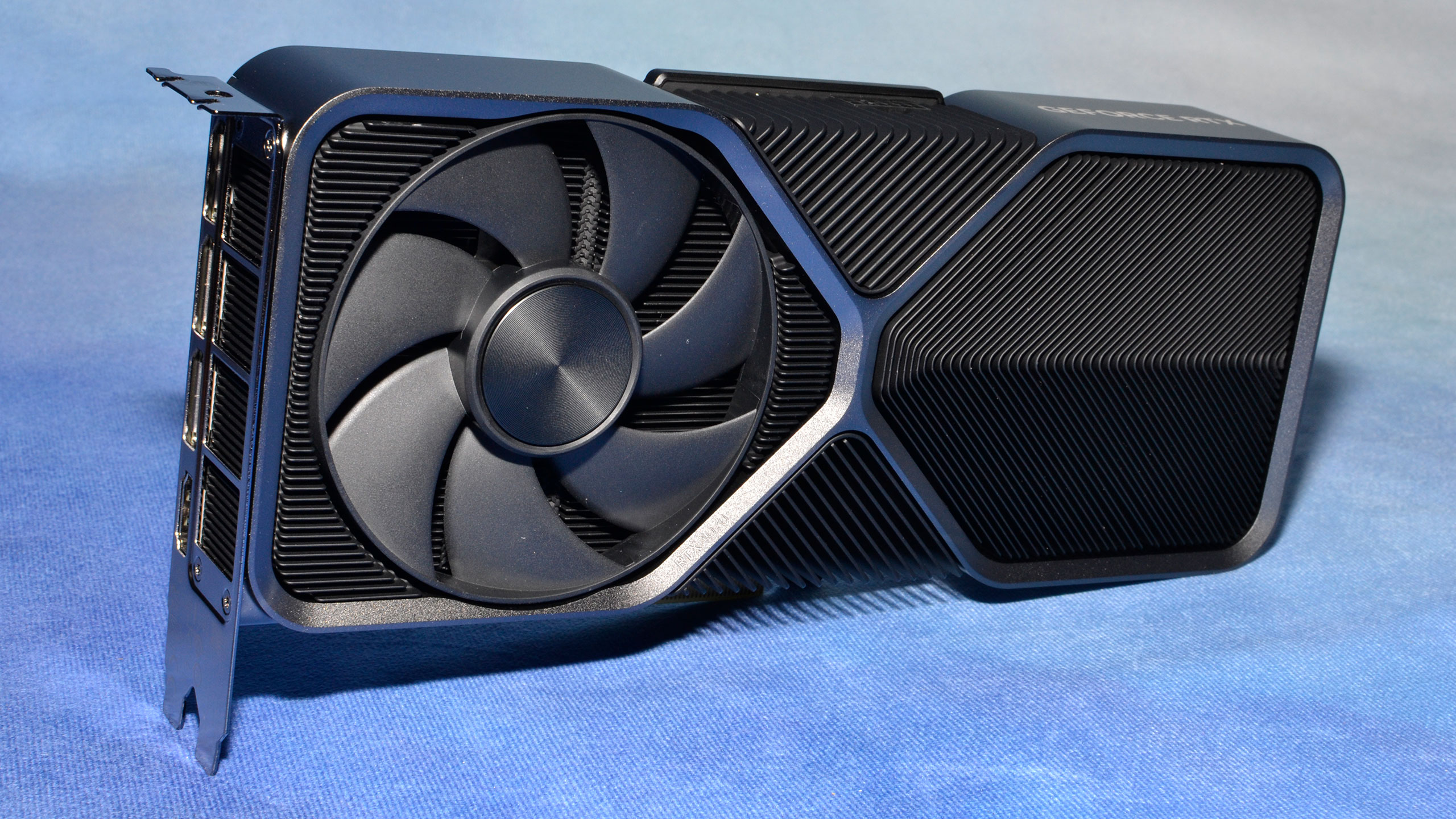
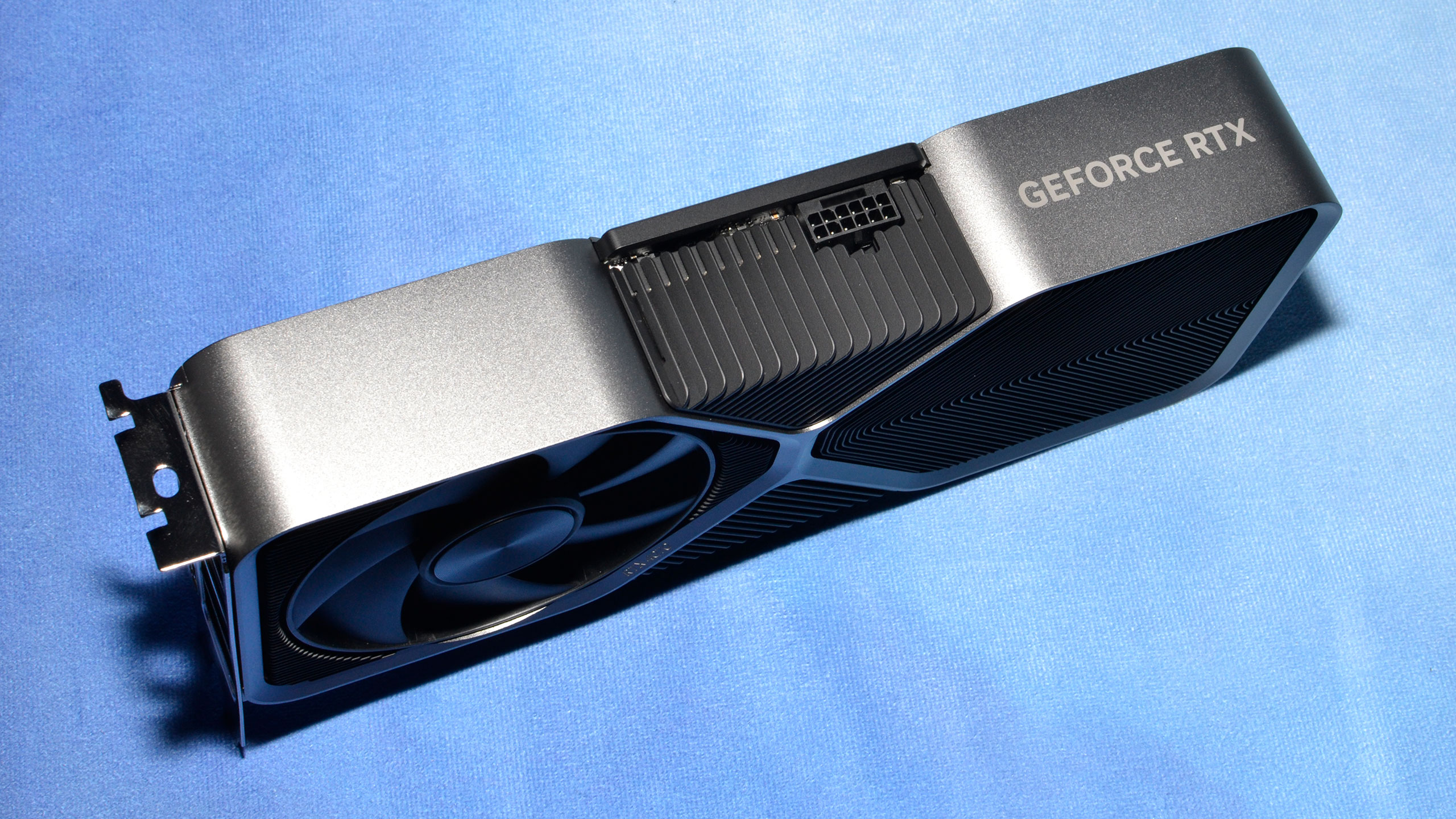
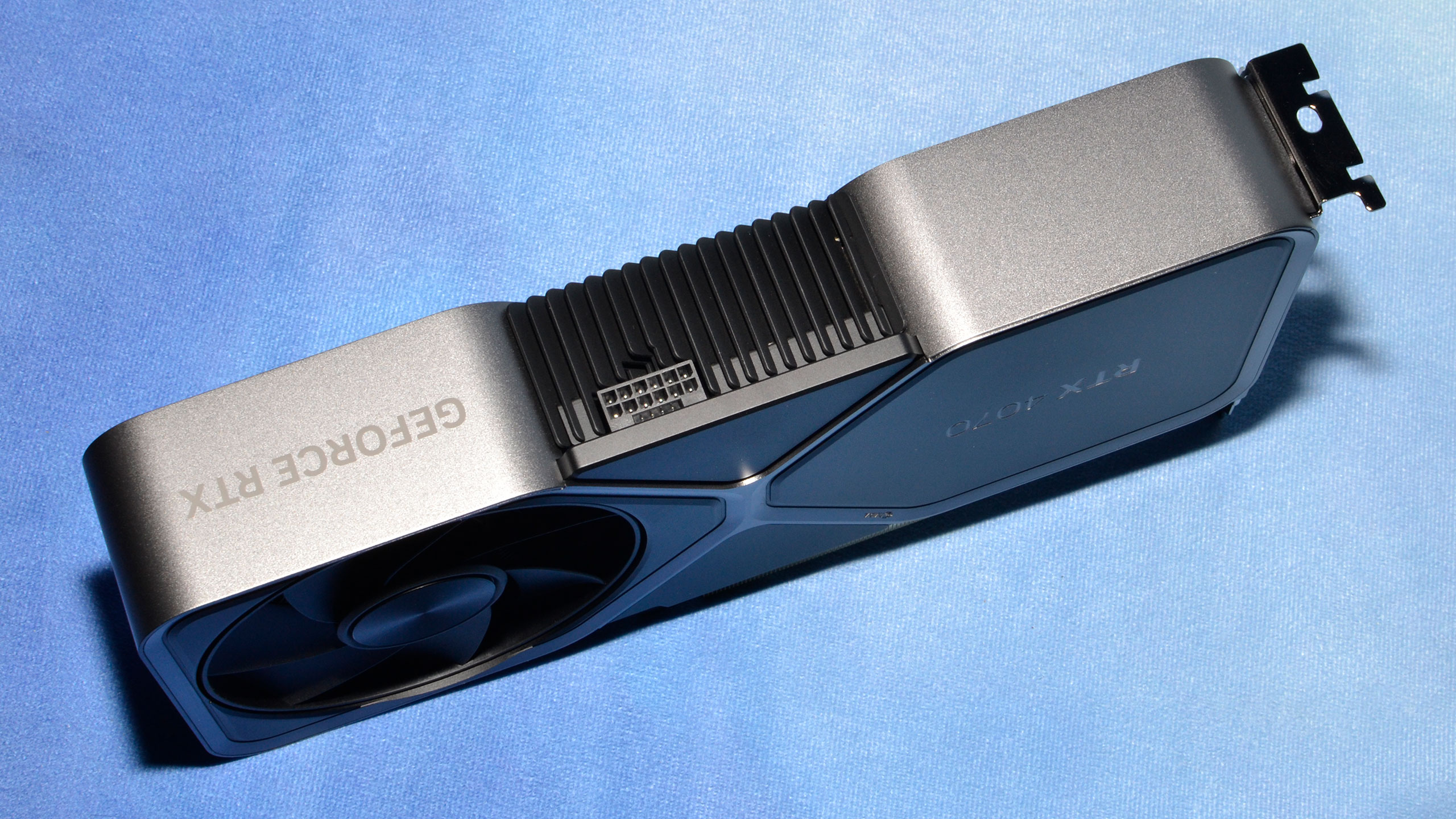
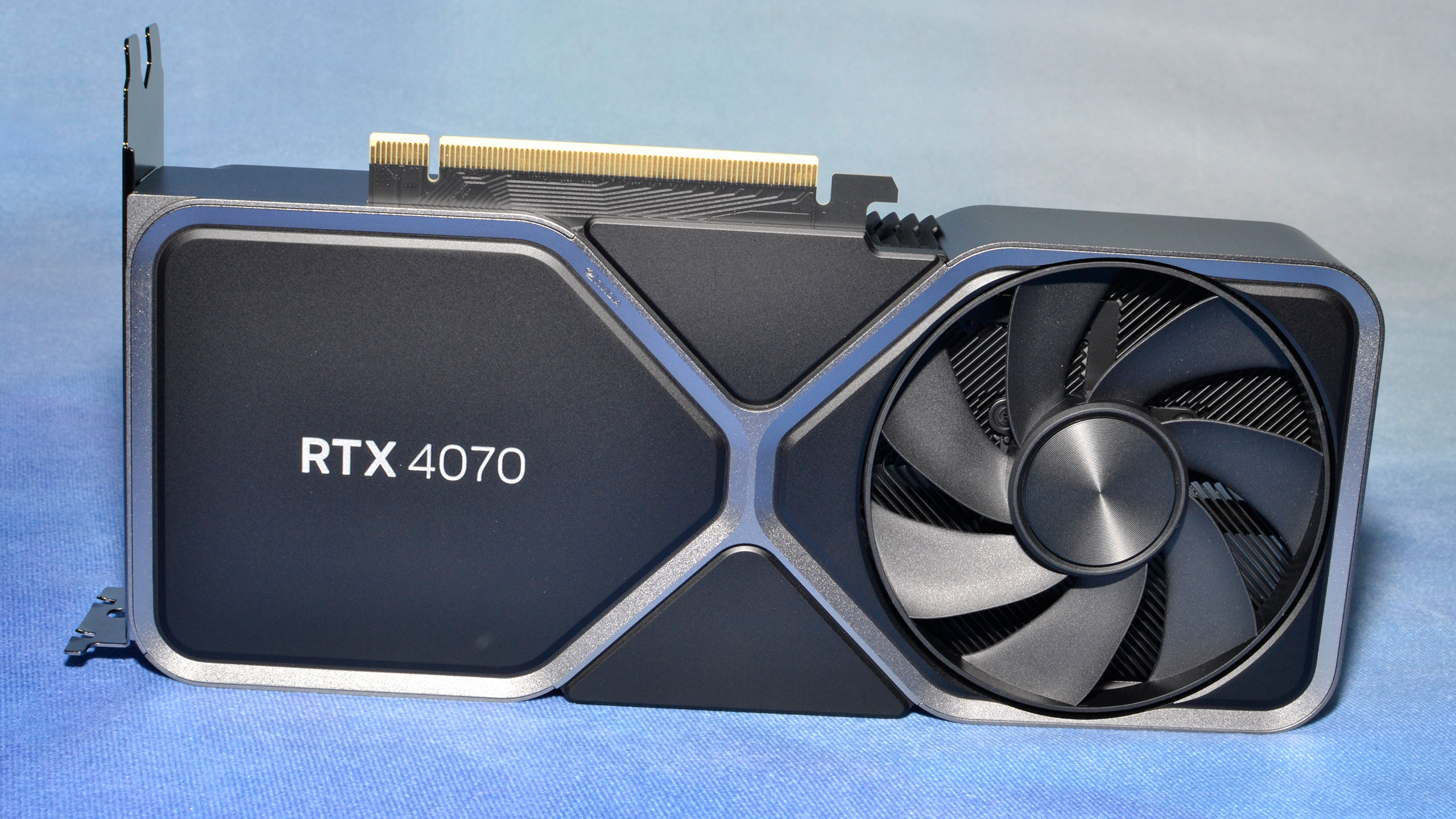
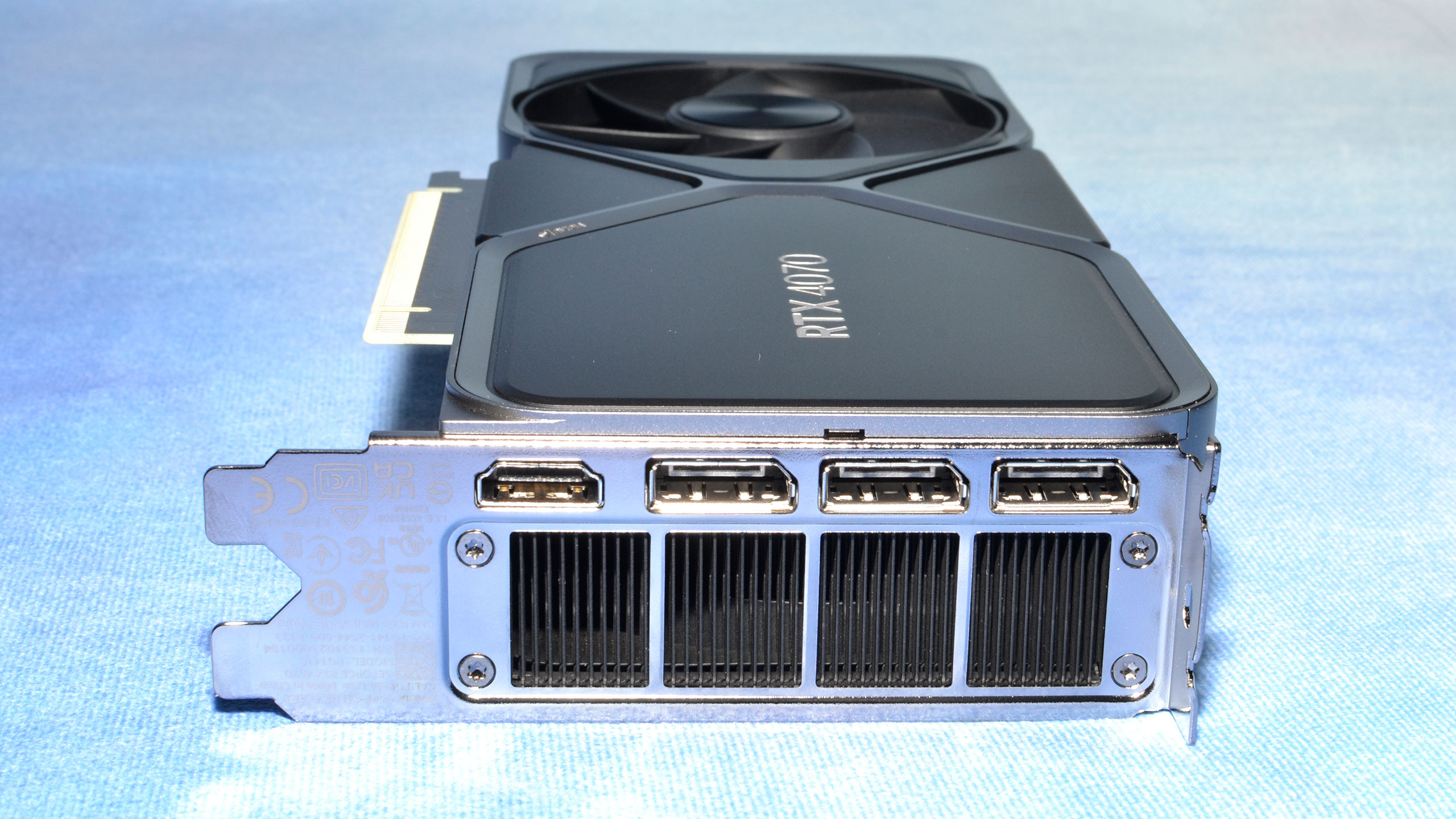
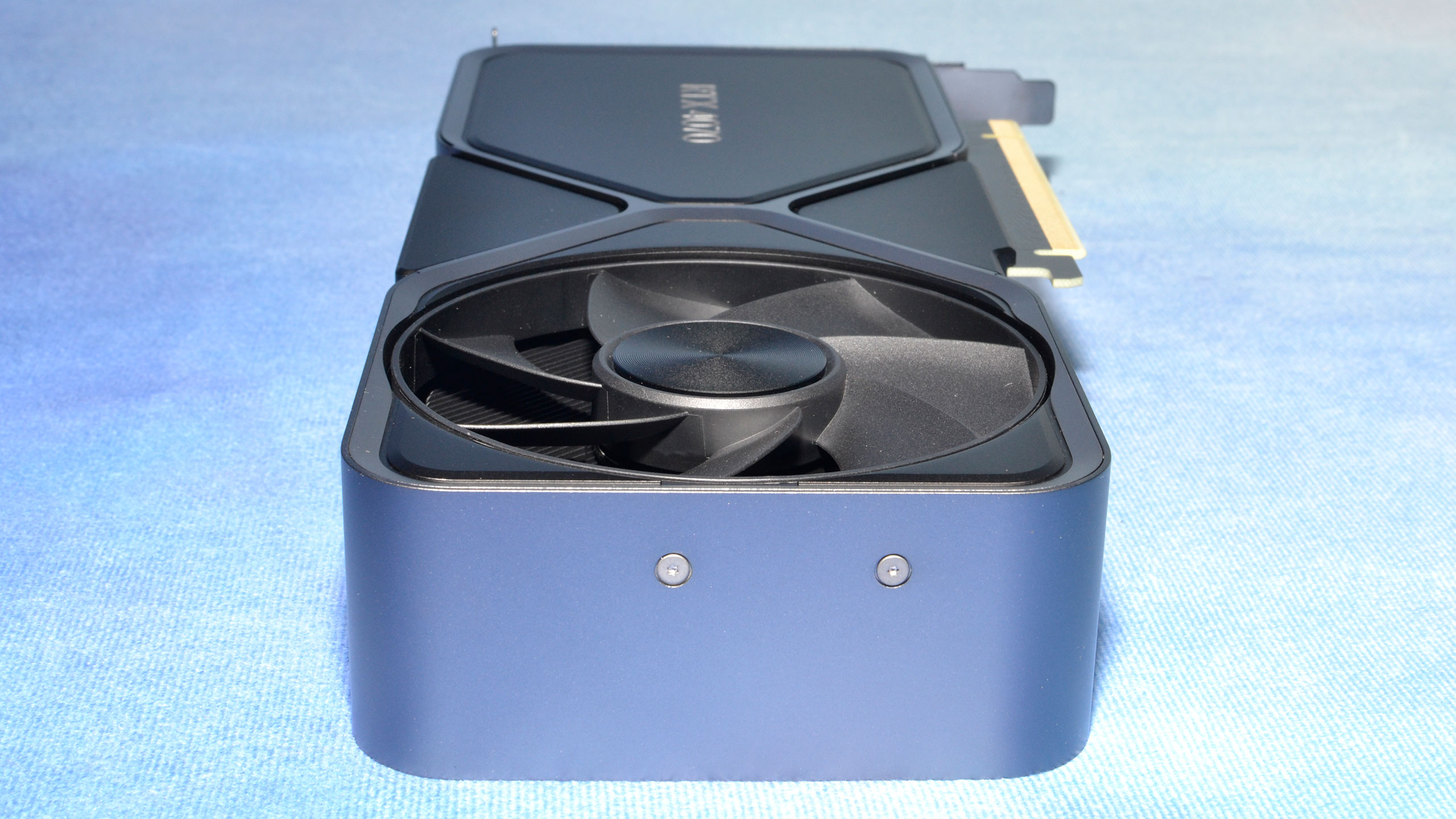
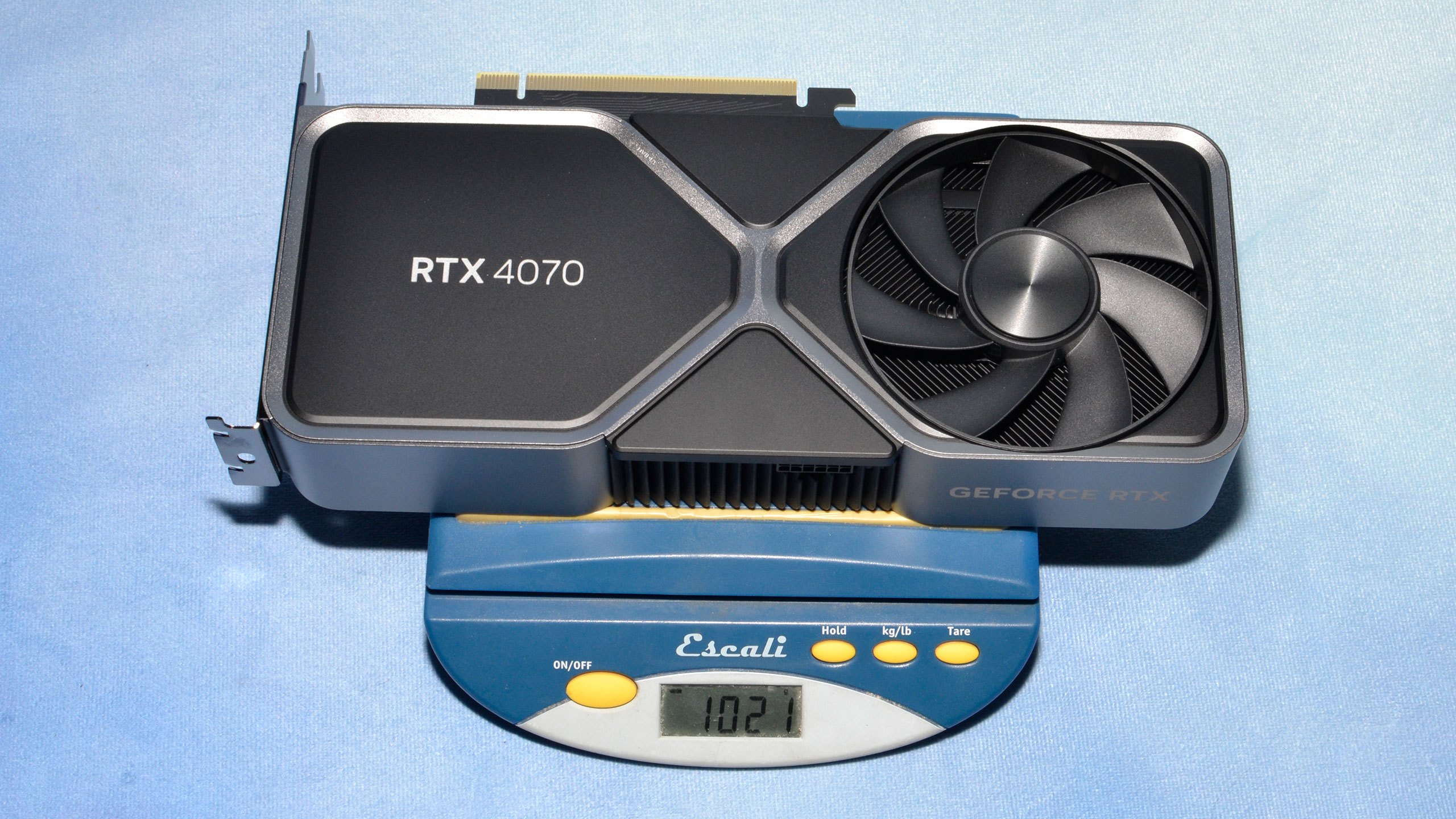
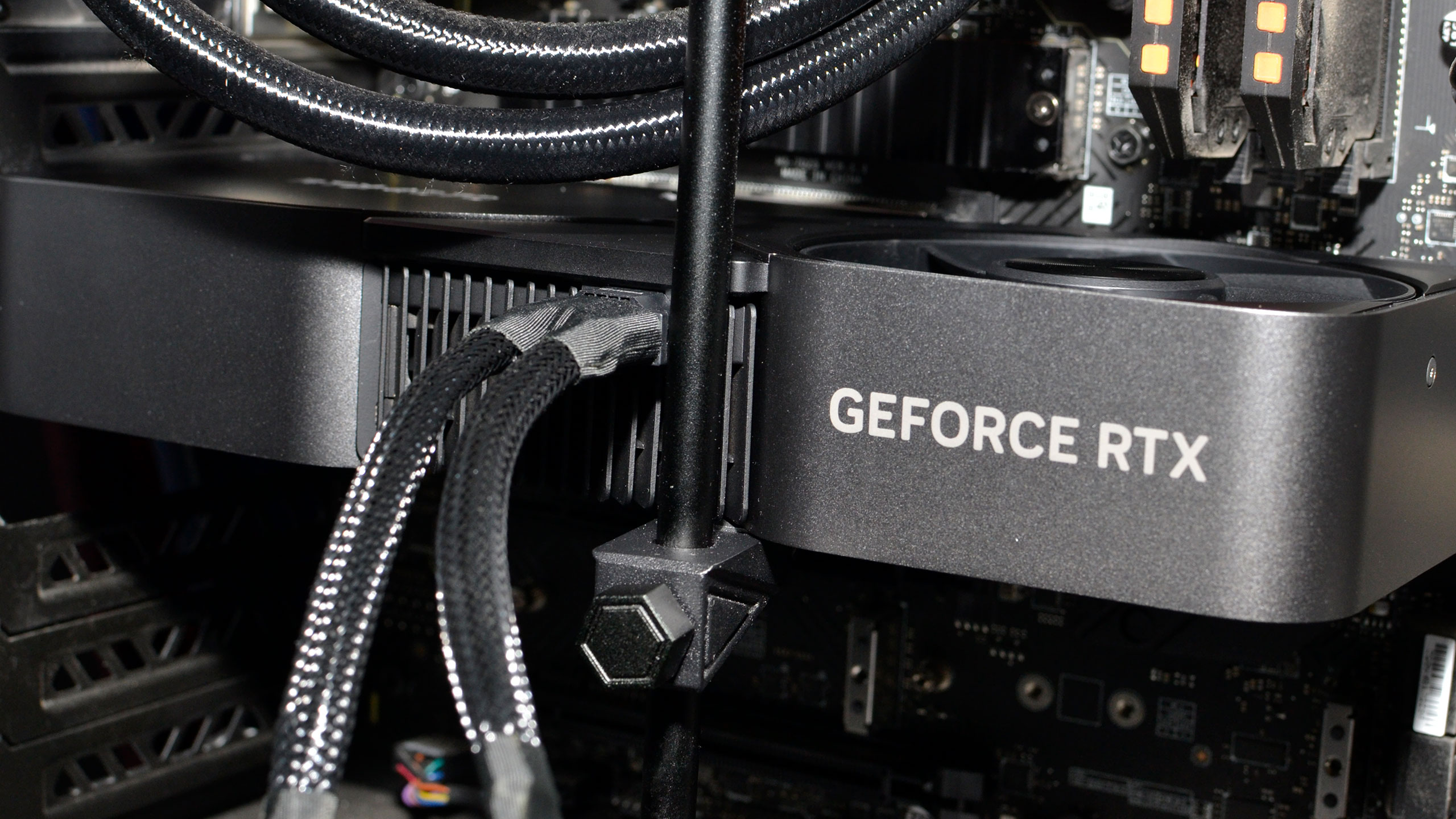
I generally like the look of the current and previous generation Founders Edition cards. They're not flashy, particularly on the models that don't have any RGB like the RTX 4070 model. But when they're installed in a typical case with a window, you can see the nice "RTX 4070" (or whatever model) logo facing upward. Also, cooling performance seems to have improved quite a bit with the 40-series, or at least the second generation GDDR6X doesn't run anywhere near as hot as the first generation did on the 30-series.
As with pretty much every Nvidia Founders Edition GPU of the past several generations, you get the standard triple DisplayPort and single HDMI outputs. (Some might still miss the USB type-C VirtualLink from the 20-series, though.) It's an HDMI 2.1 port and three DisplayPort 1.4a outputs. Not to beat a dead horse, but while DP1.4a is technically worse than HDMI 2.1 and DisplayPort 2.1 (54 Gbps), we have tested a bunch of GPUs with a Samsung Odyssey Neo G8 that supports up to 4K and 240 Hz, thanks to Display Stream Compression (DSC). Until we start seeing DisplayPort 2.1 monitors that run at 4K and 480Hz, DisplayPort 1.4a should suffice.
Since this will be our reference RTX 4070, we're skipping disassembly and teardown — we need to guarantee the card keeps working properly, and ideally not change any of the cooling or other factors. We do know there are six GDDR6X chips inside, and during testing we saw peak temperatures of 70C on the memory — a far cry from the 100–104C we often saw on the RTX 30-series cards with GDDR6X!
- MORE: Best Graphics Cards
- MORE: GPU Benchmarks and Hierarchy
- MORE: All Graphics Content
Get Tom's Hardware's best news and in-depth reviews, straight to your inbox.
Current page: Nvidia RTX 4070 Founders Edition Design
Prev Page Nvidia GeForce RTX 4070 Founders Edition Review Next Page Nvidia RTX 4070 Overclocking and Test Setup
Jarred Walton is a senior editor at Tom's Hardware focusing on everything GPU. He has been working as a tech journalist since 2004, writing for AnandTech, Maximum PC, and PC Gamer. From the first S3 Virge '3D decelerators' to today's GPUs, Jarred keeps up with all the latest graphics trends and is the one to ask about game performance.
-
Elusive Ruse If there were no previous gen high-end GPUs available this would be a good buy but at this price you can just buy a new AIB 6950XT.Reply -
PlaneInTheSky So it offers similar performance to the 3080 and launches at an only slightly lower MSRP.Reply
Going by price leaks of some AIB, we will be lucky if we're not going backwards in price / performance.
In 2 years time since the 3080, performance per $ has barely increased.
The 12GB VRAM is depressing too, considering a RX 6950XT offers 16GB for the same price.
DLSS 3.0 doesn't interest me in the slightest since it's just glorified frame interpolation that does nothing to help responsiveness, it actually adds lag.
It's hard to get excited about PC Gaming when it is in such a terrible state. -
PlaneInTheSky In Europe, price/performance of Nvidia GPU generation-generation has basically flatlined now.Reply
3080 MSRP: €699
4070 MSRP: €669
That's the state PC gaming is in now. In 2 years time, no improvement in price/performance.
It is a good example of what happens in a duopoly market without competition. -
peachpuff Reply
That's really sad, how many gold plated leather jackets does jensen really need?PlaneInTheSky said:In 2 years time since the 3080, performance per $ has barely increased.
-
DSzymborski The 4070 is releasing at a significantly lower price than the 3080. $699 in September 2020 is $810 in March 2023 dollars. $200 over the 4070 MSRP of $599 is a significant amount. Now, few 4070s will be available at $599, but then few 3080s were actually available at $699 (which, again, is $810 in current dollars).Reply
The 3070 was released at an MSRP of $499, which is $578 in March 2023 dollars. -
Exphius_Mortum Title of the article needs a little adjustment, it should read as followsReply
Nvidia GeForce RTX 4070 Review: Mainstream Ada Arrives at Enthusiast Pricing -
Elusive Ruse @JarredWaltonGPU thanks for the review, I saw that you retested all the GPUs with recent drivers which must have taken a huge effort (y)Reply
PS: Are you planning to add or replace some older titles with new games for future benchmarks? -
btmedic04 Hey look, a 1.65% performance improvement per 1% more money card when compared to the 3070. It's disappointing that's where we are at with gpus these daysReply -
healthy Pro-teen Reply
A duopoly at best, it's almost a monopoly. AMD will probably undercut it by a small amount, get middling reviews and then heavily discount the GPU only when most people have already decided on the 4070. 6950XT is discounted right now and offers better value and the average gamer doesn't know it, so 4070 will sell regardless.PlaneInTheSky said:In Europe, price/performance of Nvidia GPU generation-generation has basically flatlined now.
3080 MSRP: €699
4070 MSRP: €669
That's the state PC gaming is in now. In 2 years time, no improvement in price/performance.
It is a good example of what happens in a duopoly market without competition.
